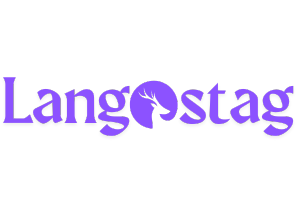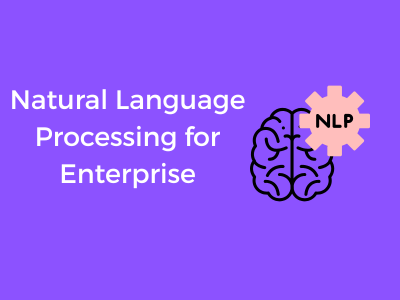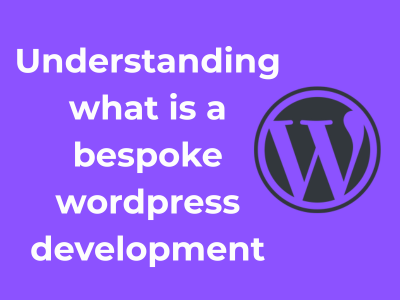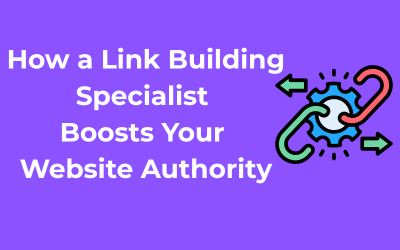Natural Language Processing (NLP) isn’t just some fancy tech jargon anymore—it’s a transformational tool that’s shaking up how businesses operate. Whether you’re running a startup or managing an enterprise, NLP has something to offer. Gone are the days when data sat around waiting to be manually sorted and analyzed. With the advent of advanced NLP, operations are getting leaner, faster, and smarter. Ready to explore how? Let’s dive in!
1. Automating Mundane Tasks
Can we get an amen for automation? NLP is a game-changer when it comes to freeing up employees’ time. Instead of pouring hours into reading endless emails, tagging files, or even processing voice-based commands, businesses can now automate it all with NLP-powered systems. Tools like chatbots and email categorization platforms use NLP algorithms to act like diligent virtual assistants. Essentially, they handle the boring stuff, so employees can focus on higher-value work (like launching big projects or brainstorming the next big idea).
2. Real-Time Insights from Unstructured Data
Here’s the harsh truth: Most enterprise data is unstructured—think customer emails, social media comments, product reviews, and meeting transcripts. Without NLP, analyzing this wealth of information would be a mammoth task that no team could reasonably tackle. Enter NLP tools, which excel at digesting text-based information and pulling meaningful insights from it.
- Sort and categorize endless PDF documents or reports with just a click.
- Identify trends in customer or employee feedback.
- Spot potential weak spots in operations before they escalate, thanks to smarter data processing.
The ability of NLP to crunch this data in real-time is helping businesses make informed decisions faster than ever before. After all, who doesn’t want to stay ahead of their competitors?
3. Enhancing Decision-Making with NLP-Powered Reporting
You’ve probably heard the phrase “data-driven decision-making” thrown around. Well, NLP is making it more actionable than ever. By analyzing communication trends, sentiment data, and operations logs, NLP presents key business insights in an easy-to-understand format. Decision-makers are no longer swamped with raw numbers or dense reports. Instead, they get targeted recommendations or visualized trends, thanks to NLP algorithms. Less guesswork, more precise strategies? Yes, please!
4. Improving Information Accessibility
Don’t you just hate digging through layers of corporate knowledge bases to find one tiny bit of information? NLP is addressing that problem head-on. With NLP-powered search and query tools, employees can retrieve documents, policy details, or project briefs in seconds. Enterprise-level knowledge management has gone from exhausting to efficient.
For example:
- Employees can type a specific question into their system—like “What’s the protocol for client onboarding?”—and get the exact document they need instantly.
- Team leaders implementing NLP can ensure their workforce finds the info they need without bottlenecks.
5. Building Smarter Communication Systems
Clear communication is the backbone of any enterprise, and NLP is taking it up a notch. From smarter email threads that recommend next steps, to systems that detect and reduce workplace jargon, NLP has a knack for making communication not just faster, but clearer. And yes, even multilingual communication barriers are becoming a thing of the past, with machine translation tools powered by—you guessed it—NLP.
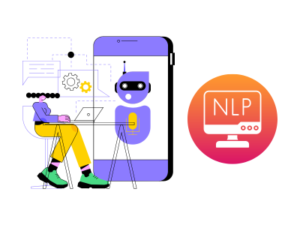
Redefining Customer Experience Through NLP Applications
Hey there! Let’s chat about something that’s making waves in the business world—Natural Language Processing (NLP). Specifically, how it’s giving customer experience (CX) a much-needed makeover. Whether it’s personalizing interactions or understanding feedback at scale, NLP has become a game-changer. So, buckle up as we explore how businesses are redefining their CX strategies with smart, AI-powered tools!
What’s Changing in Customer Experience?
Traditional customer support methods often relied on manual processes that took time and left room for errors. Enter NLP: a brilliant mix of AI and linguistic intelligence. With NLP, businesses can truly understand and respond to customers like never before. Here’s why it’s transformative:
- Faster Resolutions: Automated chatbots and virtual assistants use NLP to provide instant solutions, 24/7. No more waiting days for a follow-up email!
- Personalized Experiences: NLP tools analyze customer data to serve relevant product recommendations, creating that “wow” moment for shoppers.
- Empathy at Scale: NLP helps businesses detect tone, sentiment, and emotions in customer inquiries, allowing for more thoughtful responses.
The Magic of Conversational AI
Let’s talk about the unsung heroes of customer experience—chatbots and virtual assistants. Powered by NLP, these digital companions are not just answering “Where’s my order?” questions anymore. They’re getting smarter by:
- Simplifying Queries: Customers can use natural language, like “I want a refund for my shoes,” and voila, the bot gets to work!
- Context Understanding: Advanced NLP models remember context, so ongoing chats feel fluid and human-like.
- Multilingual Support: Language barriers? Not a problem. NLP tools enable bots to understand and respond in different languages, serving global audiences better.
A great example is how e-commerce platforms use NLP-driven chatbots to answer queries, recommend sizes, or even pull up previous orders seamlessly. Customers feel heard—and satisfied.
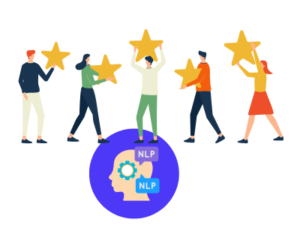
NLP in Feedback Analysis
Let’s face it—analyzing customer feedback is essential, but it can feel like finding a needle in a haystack. Luckily, NLP takes this overwhelming task and makes it manageable. By using text analysis, sentiment detection, and keyword extractions, businesses can:
- Spot trends in product reviews or support tickets.
- Identify customer pain points quickly.
- Gauge how customers feel about their brand in real time.
NLP systems allow companies to dive deep into surveys, social media chatter, and customer reviews. For instance, by analyzing phrases like “super easy to use” or “a bit pricey,” patterns emerge that inform product development and marketing strategies.
Final Thoughts
It’s safe to say that NLP is reshaping customer experience in profound ways. By bridging the gap between businesses and their customers, NLP ensures that every interaction feels personalized, empathetic, and efficient. For companies willing to embrace this technology, the rewards are immense—not just in profits but in customer loyalty. After all, who doesn’t love feeling understood?
Language Understanding in Workflow Automation for Businesses
Hello there! Let’s dive into the fascinating world of workflow automation through the lens of Natural Language Processing (NLP). It’s a game-changer for businesses worldwide and, trust me, it’s here to make life easier for every stakeholder involved. Whether you’re an operations manager, a customer service lead, or an HR professional, NLP can simplify the heavy lifting in your daily tasks. Curious? Let’s explore how!
What is Workflow Automation Anyway?
Workflow automation, in simple terms, is about getting repetitive and structured tasks done with minimal human intervention. Imagine having a virtual assistant that not only understands your instructions but executes them tirelessly and without error. Enter NLP-powered systems! By teaching machines to understand and process human language, businesses can streamline workflows in ways that were unthinkable a decade ago.
Where Does NLP Fit In?
NLP plays a crucial role in translating unstructured communications like emails, chat messages, or spoken instructions into actionable insights and tasks. Here’s how NLP shows its magic:
- Contextual Understanding: NLP ensures machines grasp the meaning of phrases and not just keywords. For instance, “Approve the invoice if the delivery’s confirmed” won’t leave an AI scratching its virtual head – it’ll analyze and act accordingly.
- Turning Speech into Action: Voice-activated assistants powered by NLP let users simply speak commands, like “Schedule a meeting with Jane,” and watch it happen.
- Data Filtering: Businesses deal with tons of emails, documents, and messages. NLP can sort and prioritize this flood of information, flagging the actionable pieces and filing the rest efficiently.
Why Businesses Love NLP in Workflow Automation
Here’s the thing – efficiency isn’t just about saving time; it’s about focusing time on what really matters. Here are some of the reasons business leaders are smitten with NLP in workflow automation:
- Improved Accuracy: Remember when you accidentally sent that wrong file to a client? NLP doesn’t make those oopsie moments.
- 24/7 Operation: Machines don’t sleep, eat, or get stressed. With NLP, your automated workflows run smoothly round the clock.
- Personalized Interaction: NLP doesn’t just streamline workflows; it can make them feel human. Personal touches in customer replies or employee communication make a world of difference.
Where Can Businesses Apply This?
The possibilities are endless! Here are just a few areas where NLP and workflow automation join hands:
- Customer Support: Automating responses to frequently asked questions or routing customers to the right agent (or even solving their issues!) using chatbot systems.
- HR and Recruitment: Processing resumes, shortlisting candidates, and even scheduling interviews – all without breaking a sweat.
- Procurement: Reviewing vendor contracts or automatically processing purchase orders when predefined conditions are met.
Enhancing Predictive Analytics with Advanced NLP Tools
Hi there! Let’s dive into a topic that’s making waves across industries—predictive analytics, but with a twist. We’re talking about giving predictive analytics a major upgrade using advanced Natural Language Processing (NLP) tools. Sounds fancy, right? Well, it is—so grab a coffee, settle in, and let’s explore why this is such a game-changer.
Why Does Predictive Analytics Need NLP?
Predictive analytics is already pretty amazing; it helps businesses anticipate trends, customer behaviors, and potential risks. But here’s the catch: a massive amount of valuable data is buried in plain sight—in the form of unstructured text.
Think about all the customer reviews, emails, social media posts, business documents, and chat logs out there. Without NLP, most predictive models rely heavily on numbers and structured data, leaving this huge goldmine of text untapped. That’s where NLP steps in to save the day.
The Magic NLP Brings to Predictive Analytics
So, what exactly does NLP add to the mix? Advance NLP tools help in:
- Extracting insights from text: NLP can identify patterns, topics, and keywords that help refine models for predicting outcomes more accurately.
- Sentiment analysis: This is a biggie. NLP can evaluate moods or opinions expressed in text—think of how helpful this is for predicting customer churn or detecting potential PR crises.
- Improving model quality: More diverse data inputs mean predictive models become smarter and more dependable. Incorporating text data analyzed through NLP boosts the overall quality of predictions.
How Businesses Can Benefit (and Shine!)
Okay, let’s get specific. Wondering how this actually translates into real-world impact? Here are some examples:
- Customer Retention: By parsing through customer feedback and online conversations, businesses can predict dissatisfaction before it results in a lost customer.
- Product Demand Prediction: Analyzing product mentions and sentiment on social media lets brands forecast trends and adjust stock levels accordingly.
- Risk Management: NLP can identify red flags in financial reports, contracts, or emails, offering an early warning system for potential risks.
The end result? A competitive edge in a crowded marketplace and the ability to make proactive, data-driven decisions.
Not All NLP Tools Are Created Equal
Before you dive headfirst into using NLP for predictive analytics, let me give you this pro tip: choose your tools wisely. Look for solutions that offer:
- A high level of accuracy in text understanding
- Seamless integration with your existing data platforms
- Scalability for processing large datasets
These factors are crucial because, let’s face it, the last thing you need is a tool that overpromises and underdelivers.
Stepping into the Future with Confidence
Advanced NLP tools are not just shiny add-ons; they’re essential for taking predictive analytics to new heights. By incorporating unstructured text, businesses can make more precise forecasts and respond to challenges with agility. Isn’t it time your predictive strategies got a language upgrade.
Data Extraction and Sentiment Analysis: Solving Real-World Challenges
Let’s talk about one of the coolest and most practical superpowers of Natural Language Processing (NLP): data extraction and sentiment analysis. If you’ve ever wondered how businesses mine valuable insights from oceans of text or decode the emotions behind customer tweets, you’re in the right place. Stick with me, and we’ll break this down into manageable bites!
What Is Data Extraction?
Think of data extraction as being the ultimate treasure hunt — except, instead of digging for gold, you’re sifting through unstructured information to find exactly what you need. Businesses deal with heaps of data — emails, reports, customer feedback, chat logs, and even social media. To make sense of it, NLP identifies and pulls out relevant pieces, like names, dates, locations, or specific trends within the text.
For example: A retail company might skim thousands of product reviews to figure out what customers like or dislike about their products. Voila! Instant actionable insights that drive improvements.
Sentiment Analysis: Reading Between the Lines
Now, onto sentiment analysis — the art (and science) of understanding the emotions behind words. With sentiment analysis, NLP helps businesses identify whether a message is positive, negative, or neutral. It’s like teaching machines to pick up on vibes, but they do it far faster and at a scale we humans can only dream of.
Consider this:
- A bank analyzes social media posts to uncover customer frustrations with their services.
- A movie studio measures how audiences feel about a new film by combing through tweets and reviews.
- An HR team evaluates anonymous employee feedback to monitor workplace morale.
Why Are These Tools Real-World Game-Changers?
From saving time to making razor-sharp decisions, the magic of data extraction and sentiment analysis is lighting up real-world challenges across industries. Here’s why they’re indispensable:
- Efficiency: Tasks that used to take hours — like combing through dense documents — are now completed in seconds.
- Customer Insights: Companies no longer guess what their audiences feel. They know, with data to back it up.
- Risk Mitigation: By identifying negative sentiment early, organizations can quickly address potentially damaging issues before they spiral out of control.
Pro Tips for Getting it Right
Okay, so you’re sold on the concept. But how do you ensure you’re using these tools effectively? Here’s a little cheat sheet:
- Use high-quality and diverse datasets to train your models. This ensures they aren’t biased or missing context.
- When working with sentiment analysis, remember: sarcasm and irony can trip up even the best algorithms. Always validate results!
- Choose NLP tools that integrate seamlessly with your existing workflow. Popular APIs like Google’s Natural Language API or Python’s SpaCy are great starting points.
Wrapping It Up
Whether it’s uncovering valuable nuggets of information through data extraction or tapping into the “feels” of your audience with sentiment analysis, NLP continues to revolutionize how we solve real-world challenges. It’s not just about collecting data; it’s about putting it to work in ways that are meaningful, actionable, and downright smart.
Improving Collaboration Across Global Teams with NLP
Have you ever wondered how companies with employees scattered across the globe manage to stay on the same page? Let’s face it—collaborating across different time zones, languages, and cultures can feel like a Herculean task. But thanks to advancements in Natural Language Processing (NLP), working with global teams is becoming a lot smoother and more efficient.
Breaking Down Language Barriers
One of the biggest challenges in global collaboration is language diversity. While English might be the go-to business language, many team members might feel more comfortable expressing themselves in their native tongue. That’s where NLP-powered translation tools come to the rescue!
- Real-Time Translation: Tools like Microsoft Teams or Slack are integrating instant translation capabilities, allowing your German colleague to write in German and your Japanese teammate to instantly read it in Japanese, all in a single thread!
- Contextual Understanding: Unlike traditional translation tools, NLP ensures sentiment, tone, and context aren’t lost in translation. After all, no one wants a joke about office coffee misinterpreted as a scheduling insult!
Closing the Gap in Communication Styles
Every culture has its own way of communicating. Some favor directness, others lean toward subtlety—and these differences can sometimes lead to misunderstandings. NLP-powered systems, like sentiment analysis tools, excel at detecting emotions and intent behind messages. Here’s how it helps:
- Neutral Tone Suggestions: Writing an email to an international client or team member? NLP tools can analyze your message and suggest edits to ensure it reads as polite and professional across cultures.
- Conflict Detection: NLP tools can flag potentially sensitive messages or ones that might lead to miscommunication, enabling team leads to resolve issues before they escalate.
Supercharging Team Productivity
Aside from enhancing communication, NLP contributes to workflow improvements that allow global teams to excel together:
- Smart Virtual Meeting Assistants: NLP-based tools like Otter.ai and Zoom’s transcription services can accurately transcribe meetings in real time. This means no more frantic note-taking and translations can happen simultaneously for all attendees.
- Intelligent Task Management: Virtual assistants powered by NLP, such as Trello bots or Monday.com integrations, can automatically assign tasks, summarize progress, and even offer reminders tailored to specific team members’ preferences.
Making Inclusion a Priority
Global teams thrive when everyone feels valued and heard. NLP can remove biases not only in language but also in workflows. For example, certain NLP systems can help companies draft inclusive policies or neutral job descriptions that resonate with employees of all cultural backgrounds.
If your team spans multiple countries and cultures, see NLP as your digital bridge. Whether it’s making clearer connections through translations, producing actionable insights from conversations, or fostering trust across coworkers, NLP is essentially the unsung hero driving collaboration.
The Way Forward: Get Started!
The next time you’re on a conference call with colleagues on the other side of the globe or sending an email to someone unfamiliar with your first language, remember: you’re not alone. NLP is here to help. Take the time to explore AI-powered platforms designed for global collaboration. They’re not just a luxury anymore—they’re rapidly becoming a necessity.
Industry-Specific Use Cases: Tailoring NLP for Maximum Impact
In today’s fast-evolving world, Natural Language Processing (NLP) is playing a pivotal role in transforming how industries operate. While NLP is often portrayed in broad strokes, its real power lies in customized applications that meet the unique needs of different industries. Let’s dive into how NLP is reshaping specific sectors and why tailored solutions matter.
1. Healthcare: Diagnosing and Documenting with Precision
Imagine a world where doctors can focus more on patient care and less on note-taking. With NLP, this vision becomes a reality. Advanced tools can analyze doctor-patient conversations, identify key information, and automatically generate medical records.
- Medical Coding: NLP ensures accurate categorization of diseases and treatments, reducing human error and expediting insurance claims.
- Faster Research: By analyzing thousands of medical journals, NLP helps researchers identify trends and breakthroughs more efficiently.
2. Retail: Personalized Shopping Experiences
Ever felt like a store just “knows” what you want? That’s NLP at work! This technology allows retailers to make shopping more personal and efficient by analyzing customer reviews, queries, and purchasing behaviors.
- Chatbots and Virtual Assistants: NLP-powered bots provide instant product recommendations and resolve customer issues without needing human intervention.
- Sentiment Analysis in Product Reviews: Businesses can gauge customer satisfaction and improve products based on real-time feedback.
3. Financial Services: Smarter Banking and Fraud Detection
The financial world thrives on data, but with so much information at hand, extracting meaningful insights can be overwhelming. NLP simplifies this process and improves critical functions.
- Risk Assessment: NLP models analyze news, market trends, and reports to identify potential investment risks and opportunities.
- Fraud Detection: By interpreting unusual patterns in transactional data or communication, NLP tools can flag fraud attempts before they escalate.
4. Legal: Streamlining Document Review
Legal professionals often spend hours sifting through mountains of paperwork. NLP is a game-changer, bringing efficiency to an industry known for its time-intensive processes.
- Contract Analysis: NLP tools can quickly identify key clauses, highlight risks, and ensure compliance with regulations.
- Case Law Research: With NLP, lawyers can find relevant precedents among massive legal databases in minutes rather than days.
5. Customer Service: Understanding Context Better
From telecom to hospitality, every industry relies on happy customers. NLP enhances customer service like never before.
- Call Transcription Analysis: Identify recurring customer pain points by analyzing call data.
- Multilingual Support: NLP ensures fluid communication across languages, helping companies support a global audience.
Why Customization Is Key
One-size-fits-all simply doesn’t work with NLP. Industries have unique challenges, and tailoring solutions ensures maximum impact. For example, the precision required in healthcare NLP differs significantly from the conversational fluency needed for retail chatbots. By focusing on industry-specific needs, businesses can achieve better accuracy, efficiency, and customer satisfaction.
Making It Work for You
If you’re considering integrating NLP into your operations, start with these steps:
- Identify specific challenges faced in your industry.
- Research NLP tools that have proven successful in similar cases.
- Work with experts to customize solutions tailored to your business goals.
NLP isn’t just a buzzword—it’s a revolutionary tool. By tailoring its application to specific industry challenges, businesses can unlock a level of productivity and insight that was unimaginable just a few years ago. Ready to make it work for you? The time to act is now!
